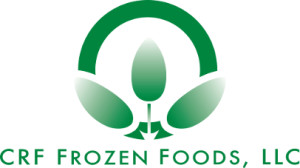I spent most of the day yesterday in a car driving from Raleigh to Buffalo en route to Toronto. We’re making the migration for a hockey tournament that Jack is playing in and doing food safety stuff along the way. Like snapping pictures of handwashing signs.
Somewhere in Appalachia I chatted with Live Science’s Sara Miller about frozen foods, Listeria and stuff that’s not ready-to-eat.
Listeria can live for a really long time in the freezer, said Benjamin Chapman, a food-safety specialist and an associate professor at North Carolina State University.
In fact, freezing is how scientists preserve bacteria when they want to study the organisms in the lab, Chapman told Live Science.
While Listeria is not ubiquitous, it is very common in raw foods, Chapman said. Most people ingest some Listeria daily, but not in high amounts, and those individuals are fine, he said. It takes, on average, thousands of Listeria cells to make a person sick, he said.
But when Listeria does make someone sick, “it’s one of the most fatal pathogens we have,” Chapman said.
Several CDC reports of Listeria outbreaks found that the infection’s mortality rate was between 15 and 20 percent among people who became sick enough that they had to be hospitalized.
To protect yourself against Listeria, frozen vegetables should be cooked before they are eaten, Chapman said. Heating the foods kills Listeria, he said.
In fact, frozen vegetables are not considered “ready to eat” products, meaning that the foods should not be eaten raw, Chapman said. Though eating raw, frozen vegetables may sound unusual, frozen kale, for example, is increasingly being used in smoothies, he said. And it’s not uncommon for pediatricians to recommend letting young children chew and suck on frozen veggies while teething, he added.
Chapman noted that microwaving these foods is not the best way to prepare them. That’s because microwaves provide very uneven heat distribution, Chapman said. The food will get very hot in some places and not hot in other places, he said. In other words, the bacteria might not be killed throughout the food.
He also recommended avoiding thawing frozen vegetables in the refrigerator. This can be risky, especially if a person leaves the food in the refrigerator for multiple days, he said. (sort of, this one didn’t translate very well as I was traveling through a mountain tunnel- thawing in the fridge is cool, leaving uncooked thawed frozen veggies in the fridge for a long time – like a week – especially if the temp is above 41F isn’t great -ben).

